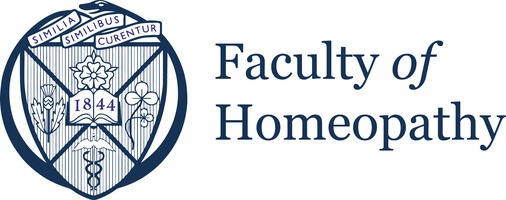Intravenous therapy, a common term in the medical world, often stirs curiosity among patients and those keen on understanding the nuances of medical treatment. This technique, a cornerstone of modern medical practice, has revolutionized how we deliver care, ensuring quick and effective treatment across an array of health conditions. In this article, we aim to demystify intravenous therapy, delving into its mechanism, uses, benefits, and risks, while exploring its role in complementary and holistic medicine.
At its core, intravenous therapy is a method of delivering fluids, medication, blood, or nutrients directly into a patient's bloodstream via a vein. The term "intravenous" itself translates to "within a vein," illustrating the technique's core principle. This approach bypasses the digestive system, offering a more efficient and often faster way to deliver therapeutic substances where they're needed most.
The concept of introducing substances directly into the bloodstream dates back to the 17th century. However, the practice of modern intravenous therapy truly began to take shape in the late 19th and early 20th centuries, with the development of suitable equipment and an understanding of aseptic techniques. It was during the cholera epidemic in the 1830s that the true potential of intravenous saline solutions was recognized, as it proved instrumental in saving lives by treating severe dehydration.
Over the years, intravenous therapy has evolved and expanded, becoming an indispensable tool in both routine and emergency medical care. It's hard to imagine a world without this life-saving technique, highlighting the importance of appreciating its historical development.
Intravenous therapy can take various forms, depending on the treatment's objective:
Each type of intravenous therapy has its specific indications, protocols, and potential complications, all of which are carefully considered by healthcare professionals when deciding on the best course of treatment for a patient. As we dive deeper into this topic, it's crucial to remember that while intravenous therapy is a powerful tool, it requires careful planning, execution, and monitoring to ensure patient safety and efficacy of treatment.
Intravenous therapy, at its core, is a powerful medical tool that allows direct access to a patient's bloodstream. This efficient bypassing of the body's external layers and digestive system provides a direct route to deliver medications, nutrients, and fluids.
When we ingest substances orally, they must pass through our stomach and intestines, undergoing a series of transformations, before they can enter our bloodstream. With intravenous therapy, this process is leapfrogged entirely. The substances, whether medications or nutrients, are introduced directly into the vein, and from there, they circulate immediately throughout the body.
Imagine a swift and efficient courier service that delivers its packages directly to the door, bypassing any potential roadblocks or delays. That's precisely what intravenous therapy is like in your body. A thin plastic tube, or catheter, is gently inserted into a vein, usually in your arm or hand. This catheter becomes a direct highway for the delivery of essential substances right into your bloodstream.
A picture speaks a thousand words, and in the context of intravenous therapy, bypassing the digestive system paints a vivid one. This technique ensures that the body receives 100% of the therapeutic substances, something oral intake cannot always guarantee due to absorption issues. This high bioavailability makes intravenous therapy particularly useful when rapid or high-dose treatment is required.
Intravenous therapy is like a Swiss Army knife in the world of medicine—versatile and relevant in numerous situations. Let's take a look at some of its most common uses.
Many medical conditions can be managed effectively with intravenous therapy. Infections that don't respond to oral antibiotics may surrender to intravenous ones. Conditions like Crohn's disease or Ulcerative colitis that affect the body's ability to absorb nutrients from food can benefit from intravenous nutritional support. Even some forms of cancer are treated with intravenous chemotherapy.
In emergency situations, time is often of the essence. Here, intravenous therapy shines as a rapid, effective method of administering life-saving treatments. Be it the delivery of pain relief in acute trauma, fluids for severe dehydration, or critical medications during cardiac arrest, intravenous therapy is a cornerstone of emergency and critical care.
We often underestimate the power of hydration and nutrition in maintaining our health and wellbeing. In situations where a person cannot consume enough fluids or nutrients orally—like in severe cases of gastroenteritis, or post-surgery—intravenous therapy steps in as a lifeline, delivering hydration and nutrients directly into the bloodstream, keeping the body's complex machinery running smoothly.
When we think of intravenous therapy, it often conjures images of a sterile hospital room and dire medical situations. However, it's time to shift that perspective. Intravenous therapy is not just for emergencies, it's a valuable tool in the world of holistic and complementary medicine.
Intravenous therapy can act as a powerful conduit, delivering essential vitamins, minerals, and antioxidants straight into the bloodstream. It's like a wellness expressway, bypassing the traffic of the digestive system, and ensuring these nutrients reach your cells swiftly and efficiently.
Three treatments gaining considerable attention are Intravenous Vitamin C, Myers’ Cocktail, and Glutathione.
While the benefits of these therapies are significant, it's important to note that research is ongoing. However, initial studies and anecdotal evidence have shown encouraging results, underscoring the potential of intravenous therapy in the holistic healthcare landscape.
As with any medical treatment, it's essential to weigh the benefits against the potential risks.
The most compelling benefit of intravenous therapy is the direct delivery of nutrients to the body's cells. This method bypasses the digestive process, allowing for higher absorption rates and quicker effects. Furthermore, it can be customised to fit individual nutritional needs, making it a versatile tool in managing various health conditions.
However, intravenous therapy is not without its risks. Potential side effects can range from mild, such as discomfort at the injection site or a metallic taste during the infusion, to more serious complications like an allergic reaction or infection. It's also possible to experience an imbalance in electrolytes if the therapy is not correctly tailored to the patient's needs.
Given these potential risks, it is critical that a qualified healthcare provider conducts a comprehensive assessment before initiating therapy. Continuous monitoring during the therapy is also essential to ensure patient safety and to adjust the treatment as needed.
While the world of intravenous therapy is exciting and full of potential, it's not a one-size-fits-all solution. Like all things in holistic medicine, the key to successful treatment lies in individualised care and an integrative approach. So, let's continue to explore this fascinating field, one drip at a time!
If you're scheduled for an intravenous therapy session, you might wonder how to prepare. Here are a few tips:
The procedure itself is typically straightforward.
After the session, there are a few things to keep in mind.
Intravenous therapy, like many areas of medicine, is continuously evolving.
The role of intravenous therapy is not just confined to acute care settings or hydration.
While there is encouraging evidence supporting the use of IV therapy, more research is needed to fully understand its scope and limitations.
In the world of intravenous therapy, the future looks bright and full of potential. As always, it's crucial to make informed decisions about your health, and open communication with your healthcare provider is key.
Taking a step back, we've journeyed through the remarkable world of intravenous therapy, unearthing its history, understanding its mechanism, and examining its broad applications. From emergency rooms to wellness clinics, intravenous therapy undeniably holds a crucial role in healthcare.
We've delved into the world of holistic and complementary medicine, shining a light on the potential of intravenous therapy in these areas. By bypassing the digestive system, intravenous therapy allows for maximum absorption of essential nutrients, making it a valuable tool in our arsenal. We've discussed treatments like the Myers’ Cocktail and Intravenous Vitamin C, therapies that can be tailored to individual needs and health goals.
Each patient is unique, and so too should be their treatment. Intravenous therapy is not a one-size-fits-all solution, and its usage should be based on thorough individual assessment and understanding. We encourage patients to engage in dialogue with their healthcare providers, to ask questions, and to actively participate in their journey towards health and wellness.
For those eager to delve deeper into the world of intravenous therapy, here are some resources that might be of interest:
Remember, the journey to wellness is a lifelong one, and education is an integral part of that journey. So, keep exploring, keep learning, and keep striving for health.

Consultant in General Internal Medicine (GMC reg. number: 7541548) and Specialist in Complementary Cancer Care
MBBS, MRCIM (Spain), MSc Homeopathy, MFHom, Master practitioner in Ericksonian Hypnotherapy and Neurolinguistic Programming, MSc in Nutrition
Integrated medicine Doctor and Holistic Medicine Practitioner



